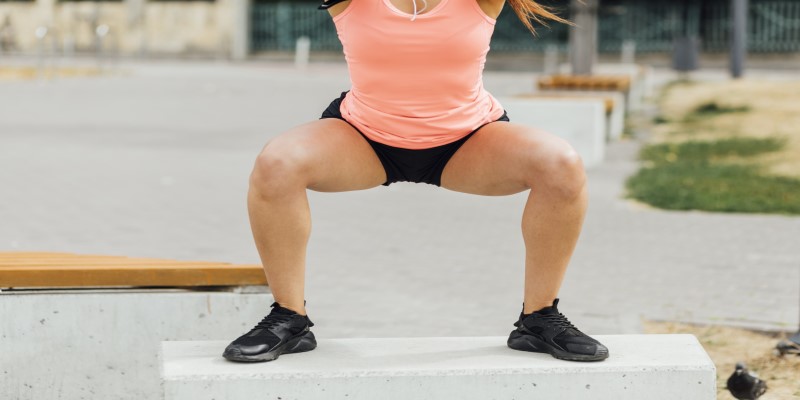Starting your journey towards a chiseled chest can often seem daunting. Whether you're a novice lifting your first set of dumbbells or an experienced gym-goer looking to refine your regimen, this comprehensive guide is tailored to help you sculpt your upper body with precision. Through detailed step-by-step instructions, we will unveil the mechanics of effective chest workouts, highlight the best exercises for pectoral development, and provide tips to maximize your gains while minimizing injury risk. Get ready to lift, push, and press your way to a stronger, more defined chest with this essential roadmap to upper body training.
Anatomy of the Chest
Before diving into the specifics of chest workouts, it's essential to have a basic understanding of the chest muscles and their function. The chest or pectoral muscles consist of two primary muscle groups:
- The pectoralis major is a large fan-shaped muscle that spans across the upper chest area. It is responsible for movements such as flexion, adduction, and horizontal adduction of the arms.
- The pectoralis minor is a smaller muscle located beneath the pectoralis major. It assists in stabilizing the scapula during arm movement.
It's also worth noting that the chest muscles are connected to other upper body muscles, including the shoulders, upper back, and arms. This means that a well-developed chest not only contributes to an aesthetically appealing upper body but also helps improve overall strength and function.
Essential Equipment for Chest Workouts
To effectively target the chest muscles, you will need some basic equipment. Here are the essentials:
- Barbells and dumbbells: These versatile pieces of equipment allow for a wide range of exercises and can be used to add progressive resistance to your workouts.
- Bench press: A staple in any chest workout routine, the bench press allows you to perform various chest exercises, including the flat, incline, and decline press.
- Cables or resistance bands: These tools provide constant tension throughout the movement, making them excellent for isolating specific muscles.
- Stability ball: This piece of equipment can be used to add an element of instability to exercises, challenging your core and stabilizer muscles while targeting the chest.
Warm-Up Exercises
Before jumping into your main chest workout, it's crucial to warm up your muscles to prevent injury and maximize performance. Here are three simple warm-up exercises you can incorporate into your routine:
- Push-ups: Place your hands shoulder-width apart on the ground and your feet extended behind you. Lower your body until your chest touches the ground, then push yourself back up.
- Shoulder dislocations: Stand with a resistance band or towel behind you, holding it with both hands. Slowly raise your arms above your head and bring them down towards your lower back, repeating the movement for several reps.
Fundamental Chest Exercises

Now that you're warmed up, let's dive into the essential chest exercises to build a strong and defined upper body. These four exercises target different areas of the chest and can be performed with both dumbbells and barbells:
- Bench press: Lie on a bench with your feet planted firmly on the ground and your arms extended above your chest, holding a barbell or dumbbells. Lower the weight towards your chest, then push it back up.
- Incline press: Adjust the bench to a 45-degree angle and perform the same movement as with the flat bench press. This exercise targets the upper portion of the chest.
- Decline press: Adjust the bench to a downward angle and perform the same movement as with the flat bench press. This exercise targets the lower portion of the chest.
- Dumbbell flys: Lie on a flat bench with your arms extended above your chest, holding dumbbells. Lower your arms out to the sides until they are level with your shoulders, then bring them back together above your chest.
It's essential to focus on proper form and control during these exercises to effectively target the chest muscles. Start with lighter weights and gradually increase as you become more comfortable with the movements.
Advanced Chest Training Techniques
Once you've mastered the fundamental chest exercises, you can incorporate more advanced techniques to challenge your muscles and take your workouts to the next level. Some examples include:
- Drop sets: Start with a heavier weight and gradually decrease the weight as you fatigue, performing multiple sets without rest.
- Supersets: Perform two different exercises back-to-back without rest to work different muscle groups and increase intensity.
- Pyramid sets: Start with a lighter weight and gradually increase the weight as you decrease the number of reps per set.
Designing Your Chest Workout Routine
Now that you have a comprehensive understanding of chest muscles, essential equipment, warm-up exercises, and fundamental and advanced training techniques, it's time to create your chest workout routine. Here are some tips to keep in mind:
- Frequency: Aim to work your chest muscles 1-2 times per week with rest days in between.
- Sets and reps: Start with 3-4 sets of 8-12 reps for each exercise and progress to heavier weights as your strength increases.
- Rest: Take 1-2 minutes of rest between sets and exercises to allow your muscles to recover.
Remember to listen to your body and adjust your routine as needed. With consistency and dedication, you'll be on your way to a strong and well-defined chest in no time.
Tips to Support Chest Muscle Growth

Building strong and defined chest muscles not only requires a well-designed workout routine but also the proper nutrition, rest, and recovery. Here are some tips to support muscle growth in your chest:
- Eat enough protein: Aim for 0.8-1 gram of protein per pound of body weight to provide your muscles with the necessary building blocks. Lean protein sources include chicken, fish, tofu, and lentils.
- Get enough rest: Muscles grow during periods of rest, so aim for 7-9 hours of sleep each night to support muscle recovery and growth.
- Stay hydrated: Drink plenty of water before, during, and after your workouts to help transport nutrients to your muscles and aid in their recovery.
- Incorporate stretching and foam rolling: Stretching after your workouts can help prevent muscle soreness and tightness, while foam rolling can improve blood flow to the muscles and promote their recovery.
Conclusion
Incorporating chest exercises into your workout routine can help you develop a strong and defined upper body. From warm-up exercises to advanced training techniques, there are numerous ways to target your chest muscles and challenge them for growth. Remember to also prioritize proper nutrition, rest, and recovery to support muscle growth and prevent injury. Keep pushing yourself and staying consistent with your workouts, and you'll see progress in no time.



